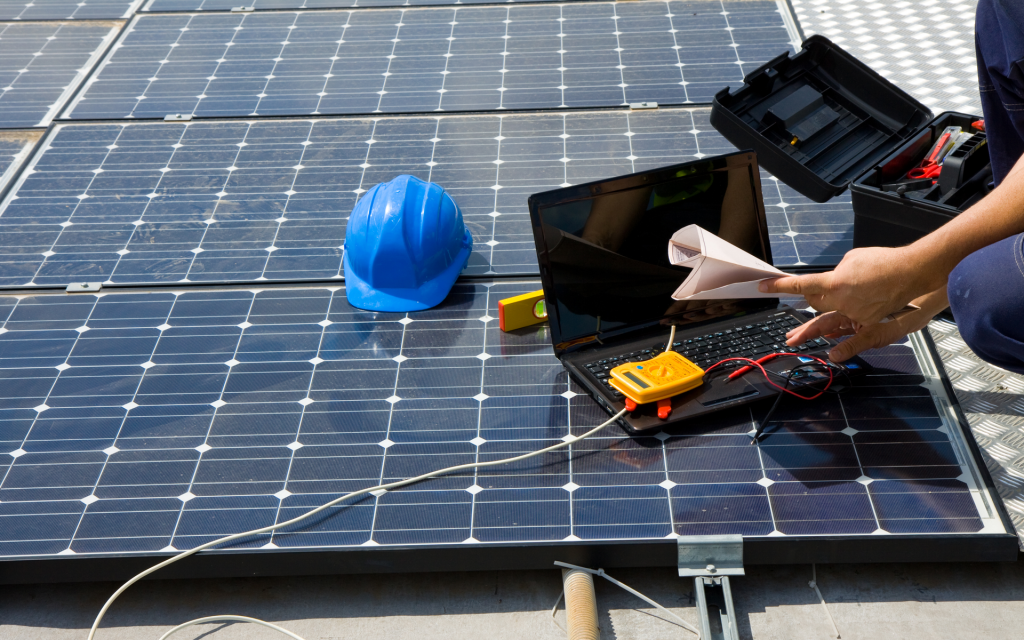"Panel Repair Basics: Preventing Electrical Hazards at Home"
Learn all about panel repair, from common warning signs to cost estimates and preventive tips. Keep your home safe with expert repair solutions.
Electrical panels are like the control center of your home’s electrical system. They distribute electricity to different areas of the house and ensure everything runs smoothly and safely. Over time, these panels can become outdated, overloaded, or damaged, putting your home at risk. That’s where panel repair comes in. Whether you’re dealing with flickering lights or frequent circuit breaker trips, understanding when and why you need panel repair can save you money and prevent dangerous situations. In this blog, we’ll break down everything you need to know in simple, easy-to-understand terms.

What Is an Electrical Panel and Why Is It Important?
An electrical panel (often called a breaker box or fuse box) is where electricity from the utility company enters your home and gets distributed to various circuits. Each circuit powers different areas or appliances.
The panel ensures that electricity flows safely throughout your home. If something goes wrong—like a surge or short circuit—the panel is designed to shut off power to prevent fires or damage. Without a working panel, your HVAC system, lights, kitchen appliances, and more could all be affected.
Signs That You May Need Panel Repair
It’s not always obvious when there’s a problem with your electrical panel. But there are several warning signs that shouldn’t be ignored.
Some common symptoms include:
- Frequent tripping of breakers
- Burning smells near the panel
- Unusual buzzing or crackling sounds
- Lights that flicker or dim regularly
- Warm or discolored panel surfaces
If you notice any of these issues, panel repair might be necessary to keep your home and family safe
Common Causes of Panel Damage
Electrical panels can become damaged or worn out over time due to various factors.
Typical causes include:
- Age: Older panels may not handle today’s electrical loads
- Overloading: Too many appliances running on one circuit
- Water damage: Moisture can corrode parts of the panel
- Faulty wiring: Poor installation or old wiring can lead to short circuits
- Rodents or pests: Animals can chew through wires inside the panel
Identifying the cause of the issue is the first step in effective panel repair
Why Timely Panel Repair Matters
Delaying electrical repairs can lead to serious consequences. Even small issues, like a tripped breaker, could be a sign of something bigger.
Here’s why timely panel repair is essential:
- Prevents house fires and electrical shocks
- Keeps your appliances from getting damaged
- Helps your home meet electrical code requirements
- Ensures your HVAC and major systems work properly
- Increases energy efficiency
Addressing panel issues early can save you thousands in long-term repair or replacement costs.
Panel Repair vs. Panel Replacement
Many homeowners wonder if they need to repair or replace their panel. The answer depends on the age, condition, and type of damage.
Choose repair if:
- The damage is minor (e.g., one faulty breaker)
- Your panel is less than 20 years old
- The panel still meets safety and code standards
Choose replacement if:
- Your panel is outdated (e.g., a fuse box)
- There are signs of serious damage or corrosion
- You’re upgrading to support higher energy usage
A licensed electrician can inspect your system and recommend the best course of action.
Cost of Panel Repair and What Affects It
The cost of panel repair can vary depending on the issue’s severity and location. On average, minor repairs like replacing a breaker might cost between $100–$300, while more involved repairs can go up to $600 or more.
Factors that affect the cost:
- Type of panel
- Labor rates in your area
- Materials needed
- Accessibility of the panel
- Urgency of repair (emergency calls often cost more)
Always get quotes from licensed electricians to avoid unexpected expenses.
Preventive Tips to Avoid Future Panel Issues
You can reduce the chances of future problems with a few simple preventive steps.
Try these tips:
- Schedule annual electrical inspections
- Don’t overload circuits
- Keep your panel dry and away from moisture
- Replace old wiring during home renovations
- Be alert to early warning signs like smells or strange sounds
Regular maintenance helps extend the life of your panel and keeps your home safe.
FAQs
Q1: How long does panel repair usually take? A: Most minor repairs take 1–3 hours, while more complex issues could take longer, depending on the damage.
Q2: Can I do panel repair myself? A: It’s not recommended. Electrical panels carry high voltage and can be dangerous. Always hire a licensed electrician.
Q3: Will panel repair improve my energy efficiency? A: Yes. A properly functioning panel ensures your electrical system runs smoothly, which can lower your energy bills.
Q4: How often should I inspect my panel? A: Every 3–5 years is ideal, or sooner if you experience any electrical issues.
Q5: Is panel repair covered by homeowners insurance? A: It depends on your policy and the cause of damage. Sudden incidents like lightning strikes may be covered, but age-related wear usually isn’t.
Conclusion
Electrical panels are essential for your home’s safety and energy distribution. Ignoring signs of damage can lead to big problems—like power loss, damaged appliances, or even fires. Fortunately, prompt and professional panel repair can help prevent all of that.
If you’re experiencing any electrical issues, don’t wait. Contact a trusted electrician today and schedule an inspection. Keeping your panel in top condition means keeping your home safe, your appliances running smoothly, and your energy bills in check.